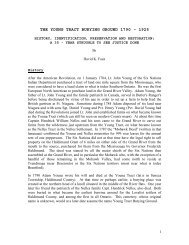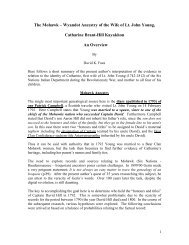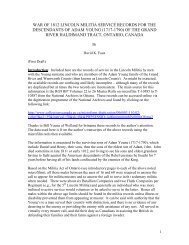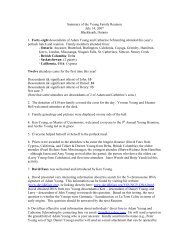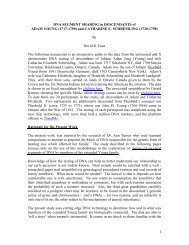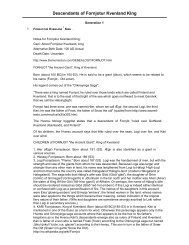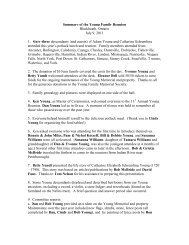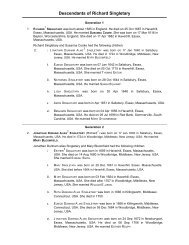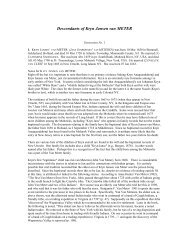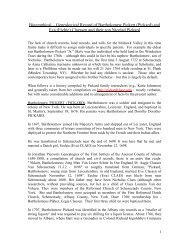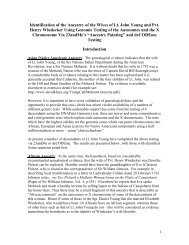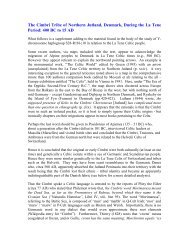Part 2 - Davidkfaux.org
Part 2 - Davidkfaux.org
Part 2 - Davidkfaux.org
Create successful ePaper yourself
Turn your PDF publications into a flip-book with our unique Google optimized e-Paper software.
R-U152 findings – Very few Mainland Scots have tested U152 positive, one being fromthe Moray Firth (an area of Viking settlement) and another from Caithness whichexperienced the largest Viking presence, others from the capital of Edinburgh orsurrounds, and one from Kinrosshire – all on the east coast, and none to date from thewest coast. This despite a relatively large number of Scots having tested for this marker.NORTHERN ISLES: Orkney and Shetland will be considered separate from the rest ofScotland. Until 1468 each was under the control of Norway, and had been settled by theNorse from the 9 th Century. After 1468 Mainland Scots families settled in Orkney andShetland and came to make up about 50% of the population. Neither is considered tohave been the direct recipient of any La Tene era population infusion from CentralEurope – and the debate continues whether there were any Picts residing there when theVikings arrived, whether they were all put to the sword, or whether there was anabsorbtion of the aboriginal population by the Scandinavian invaders (the fact thatvirtually all place names are Norse would argue against Pictish survival to the present).R-M269 percentages - About 66% of Orcadians and Shetlanders are R-M269.R-U152 predictions – The Scottish Mainland Pictish – Celtic component are likely to bealmost entirely R-L21*. Those who have English surnames will probably result in about10% R-U106 (S21), and those of Norse ancestry possibly 50% (over 60% of NorwegianR-M269 is U106+ based on preliminary findings with an academic sample). This leavesa very small percentage who might be R-U152.R-U152 findings – A large Orcadian sample has been tested and as predicted only about5% of the R-M269 is R-U152. What is particularly interesting is that so far, withoutexception, all of those who tested U152+ have farm / place names which in Orkneymeans a Norse background, or are known to have arrived from Norway during Medievaltimes. There are other families who came later from Norway who test U152+ but no oneelse. In a small sample of Shetland R-M269, two families were determined to be R-U152. Interestingly, both originated in Orkney. The interpretation of these results willdepend on the findings of the Norwegian sample noted later.WALES: Wales is considered to be the location where the Celtic – speaking Britishretreated after the Anglo – Saxon invasions of the 5 th Century AD (joining their fellow P-Celt speakers). There is no evidence at of any La Tene Central European migration tothis area. However the exception might be the Island of Anglesey (Mona) which was the“headquarters” of the British Druids, which in turn attracted those from the Continent tostudy.R-M269 percentages – Wales is predominantly R-M269 with 85 to 90% being typical.R-U152 predictions – The majority of those from Wales will be R-P312/S116* orL21/S145*, but there will likely be some regional differences such as the 40% finding ofhaplogroup E3b in Abergele, North Wales (otherwise rare in Britain). Wales could havereceived R-U152 via four sources – Continental migrants (e.g., Flemish) in recent times;19



